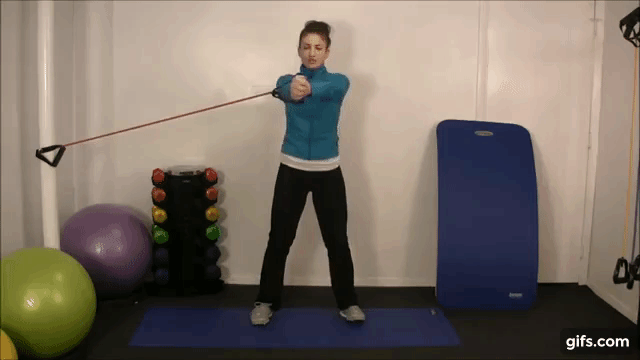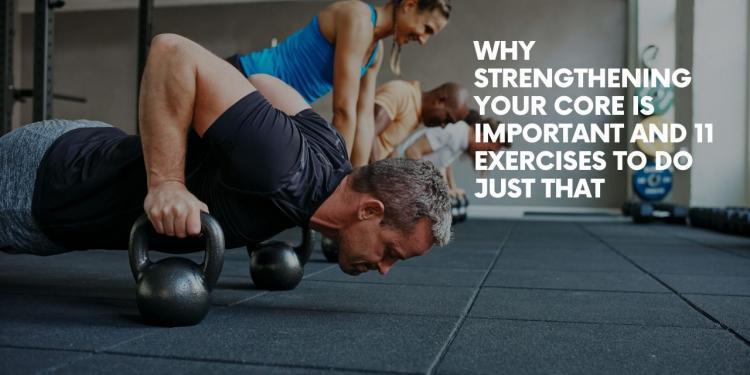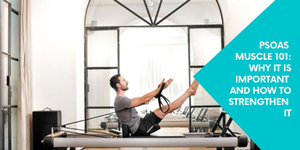Want a chiseled six pack? While the covers of various fitness magazines shout about the desire and aesthetics of a strong core, your core is much more than just your abs. It involves essentially your whole trunk, front and back. They’re the key to phenomenal athletic performance, better workouts, a reduced risk of injury and improved quality of life. This is especially important if you participate in dynamic sports such as martial arts, where core stability is necessary. Here are the three reasons a strong core is absolutely essential, plus 11 effective exercises for washboard abs and a strong core.
More...
What Body Parts (or Muscles) Does the Core Comprise of?
When most people think about the core, they most often think of the abs. However, the core, comprises much more than that.
The traditional "abs" that your mind may immediately jump to are technically known as the rectus abdominis muscle. Other major muscle groups in your core include:
- Your pelvic floor muscles
- The transverses abdominis, which activates when you suck your belly button into your spine
- The multifidus, which holds your spine stable when you move
- The internal and external obliques, which are activated when you bend to the side, or when you twist
- The erector spinae, which is critical for trunk extension (e.g. bending backwards or standing up straight from a bent position)
3 Surprising Reasons You Need a Stronger Core Today
1. Strengthening Your Core Enhances Functional Fitness
Functional fitness is a broad category that involves anything that prepares you for the demands and challenges of real, everyday living. After all, what’s the purpose of building strength and sweating it out in the gym if you can’t experience life at its fullest?

Few workouts are as important for daily life and everyday acts as strengthening your core. You’d be amazed at all the different activities that require your abdominal muscles, whether that’s bending down to tie your shoes (trunk extension, which requires the erector spinae), twisting to grab groceries out of the core (you need strong obliques to twist), or carrying your child. Even some seemingly mundane tasks, like sitting in a chair and standing up (multifidus, erector spinae and obliques), require a strong core.
2. Strengthening Your Core Prevents Injuries
Don’t let an injury stand between you and your next workout, or between you and your next MMA match.
The importance of your core strength for injury prevention and risk mitigation cannot be overemphasized. On a biomechanical level, the numerous muscles in your core are crucial for stability, coordination, balance and overall movement. That’s because your core strength and mobility affects everything from your pelvic floor muscles, to your internal and external obliques, to your erector spinae and diaphragm.
One massive meta-analysis, which reviewed all clinical studies on core strength published between 1980 and 2012, found that improving the strength of your core muscles was linked with injury prevention, muscle stabilization, dynamic stabilization, and improving your movement patterns.
You can see this play out in numerous sports. For example, MMA fighters and athletes across all sports reduced their injury risks of ACL tears by 25 percent. In soccer players, a strong core was associated with a 25 percent reduction in ankle injuries, and a 20 percent reduction in the risks of hamstring injuries. And in baseball players, the risks of elbow injuries and shoulder injuries dropped by 66 percent when core strength was improved.
It makes sense. If you have poor oblique strength, for example, you can hurt yourself when bending down to grapple. Or, if your multifidus isn't strong and mobile, you'll compromise your spine stability, increasing your risks of back injuries.
3. Strengthening Your Core Enhances All Your Other Workouts
Similar to the factors related to injury prevention, because your core affects most other muscle groups, a powerful core is also important for powerful workouts.
Think of it this way. Within your body, muscular energy output has a ripple effect across all biomechanical systems.
A weak core, or a core that has poor mobility, negatively impacts the power output of your arms and legs.
This means it takes more effort to do the same movement, sabotaging your exercise routine. In contrast, a strong core lets the rest of your body move more efficiently, resulting in more energy output and faster, stronger gains.
11 Best Exercises to Strengthen Your Core and Build a Lean Six Pack (According to Science)
Using cutting-edge technology, the Biomechanics Lab at San Diego State University conducted a wide-ranging study on the most effective exercises for targeting your core. This measured everything from muscle activation as well as how nearby muscles were recruited and affected.
Their fitness study identified 12 exercises that you can use to strengthen your entire core today, starting with the most effective workouts. Some are bodyweight movements (i.e. calisthenic exercises) and others require weights or similar exercise equipment. For simplicity, we combined two of the exercises into one on this list (the torso track and ab roller knee roll out). So there are 11 on this list.
1. Bicycle crunches
Focus: Rectus abdominus, obliques
Lie on the ground facing upwards with your hands behind your head and your knees bent at a 45-degree angle. Bring your right knee up while lifting your upper back and bringing your left elbow forward. Your knee and elbow should touch. Pause, then return to the starting position and repeat, creating a "cycling" motion with your legs.
2. Captain's Chair Crunches
Focus: External obliques, abdominal hip flexors, rectus abdominis
This requires the captain's chair or a dip station. With your back pressed against the chair and your forearms supporting you in the air, lift your knees toward your chest before lowering slowly. Engage your core whole both lifting and lowering your legs.
Increase the intensity by squeezing a dumbbell between your feet.
3. Exercise ball sit-ups

Focus: Rectus abdominis, transverse abdominis, obliques, erector spinae
Sit on an exercise ball and perform standard sit-ups on it. The ball activates more of the stabilizing muscles in your core.
Optionally, you can add weights by holding a dumbbell or kettlebell against your chest.
4. Vertical leg crunches

Vertical leg crucnhes
Focus: Rectus abdominis, lower back extensors, the transverse abdominals, and the obliques
Think traditional crunches, but with your legs straight and pressing upwards toward the ceiling.
If you need a refresher on how to do a traditional crunch, scroll down to Exercise 10 in this list!
5. Ab roller knee roll-outs / torso track
Focus: Entire core muscle group
This killer core exercise is excellent for the whole core but it does require an ab roller. Position yourself over the track with your knees on the floor and your hands grasping the handles. Push forward until you’re prone, then contract your abs and pull yourself back into the starting position. The slower you roll out and the further you extend yourself, the harder the exercise is. And for more exercises you can do with the ab roller, visit this article!
6. Long-arm crunches

Long Arm Crunch
Focus: Rectus abdominus, transverse abdominals, lower back extensors, and obligues
Long-arm crunches are traditional crunches, but with your arms extended straight above your head. The extension requires more stabilization and increases resistance. You can increase intensity even further by holding a weight in your arms, or tying a strength band to a steady surface and holding the end of the band in your hand while doing the crunches.
7. Reverse crunches
Focus: Rectus abdominus, transverse abdominals, lower back extensors, and obliques
Think regular crunches, but instead of bringing your upper back up, you’ll raise your lower back off the ground while squeezing your abdominal muscles.
If the calisthenics version is too easy, squeeze a weight between your feet.
8. Crunches with heel pushes
Focus: Entire core muscle groups
This version of the crunch involves keeping your feet on the floor instead of lifting them. However, you'll still press down and push with your heels, moving the focus more on your upper abdominals and your shoulders. The flatter back in this movement may be ideal if you have back pain.
9. Hovers
Focus: Rectus abdominis, external oblique and erector spinae
Also known as a plank, this straightforward exercise has you resting on your toes and forearms. You can, alternatively, modify this and have your arms straight below your shoulders while keeping the rest of your body in a straight line.
Add weights by placing a weight plate on your lower back while maintaining a straight line between the back of your head down to your legs.
Try holding it for a couple of minutes if you can. If you think that is hard, check out this 62 year old who held his plank for over 8 hours.
10. Traditional crunches
Focus: Rectus abdominis, plus secondary activation of the rest of the core muscle groups
Lie on your back with your feet flat on the ground, positioned approximately the same width apart as your hips.
Cross your arms on your chest and, with your knees bent and your feet not moving, lift your upper body upward. Pause at the top, then get back into the starting position.
Optionally, add a weight by holding a weight plate against your chest.
11. Resistance band twists

Resistance band oblique twists
Focus: Rectus abdominis, transverses abdominis, obliques and erector spinae
Tie one end of a strength band or exercise tube around a stable surface, such as a door frame. Hold the other end of the tube in your hands. While standing straight, perpendicular to the band/tube, twist your abs to the left. Pause, return to the starting position, and repeat on the opposite side. Remember to engage your core the whole time while doing this.
To increase resistance, stand closer to the point that the other end of the tube is tied. You can also modify resistance by adjusting how you’re holding the other end of the tube/band (e.g. close to your chest versus your arms extended and straight in front of you).
To adjust for level of difficulty, it is best to get multiple resistance bands so you can adjust the level of resistance.




